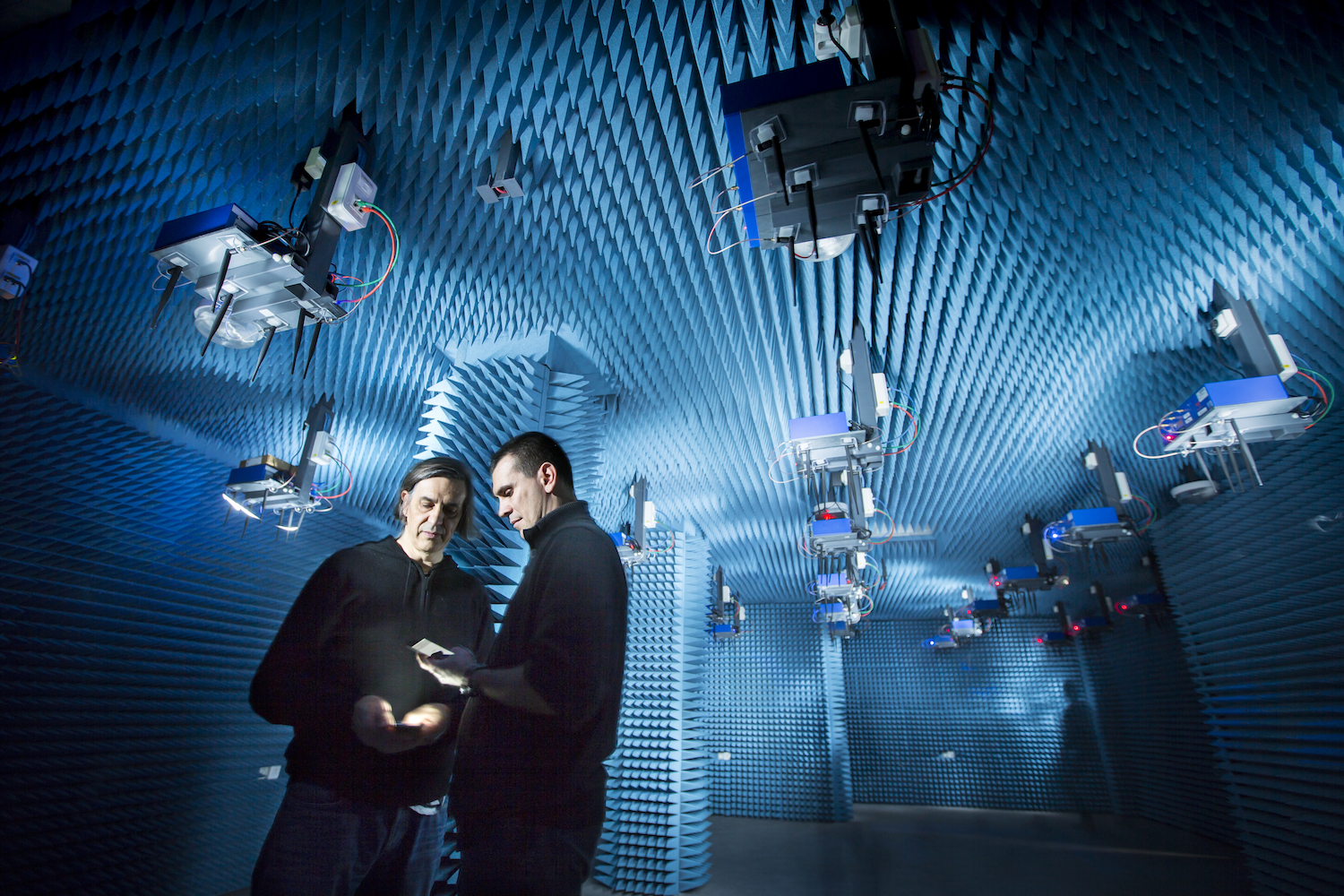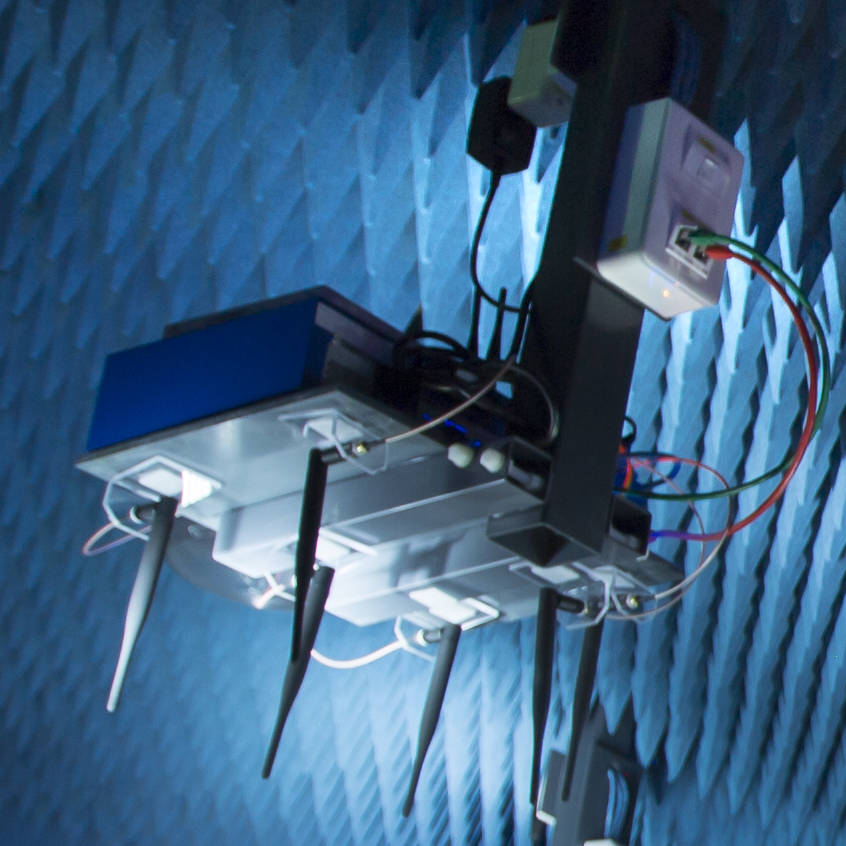
the OneLab Experimental Facility

R2lab is an open tested located in an anechoic chamber for reproducible research in wireless WiFi and 4G/5G networks.
R2lab is part of the FIT federation, an open large-scale testing infrastructure for systems and applications on wireless and sensor communications.
Located at INRIA Sophia-Antipolis, R2lab proposes thirty seven customisable commercial off-the-shelf wireless devices, together with USRP nodes and commercial LTE phones, fit to create rich experimental setups. The testbed also features advanced software like leverage GnuRadio and OpenAirterface, as well as efficient software tools, to support easy experimentation.
These tools allow to book the whole testbed, to remotely control the wireless devices, to easily deploy various scenarios and to collect results.


The R2lab platform sits in an insulated anechoic chamber of ≈ 90m2. It hosts thirty-seven nodes scattered on a fixed grid; about one third of these nodes feature a USRP board, of various kinds. In addition, commercial phones are available for connecting to a simulated 4G network.
All these resources can be controlled remotely through a unique ssh gateway at
faraday.inria.fr. Users have full control, and can run their OS of choice
with any experimental software they need for achieving their goals.
Experiments can thus be orchestrated with standard tools. For convenience, we also provide software tools as python libraries (see more details and tutorials here), that allow to quickly script efficient experiment deployment capabilities, complete from nodes provisioning to data collection. Check out our YouTube videos for more information.
R2Lab is also part of the FIT Equipex Project, funded by ANR, that offers a range of testbeds oriented towards research in networking.
As such, it is part of the OneLab federation of testbeds - a consortium of higher education and research institutions.
This ecosystem features a variety of networking and communication environments and testbeds, that offer a wide spectrum of services: internet-overlaid testbeds; wireless, sensing and mobility testbeds; broadband access; core testbeds and network emulation environments.
